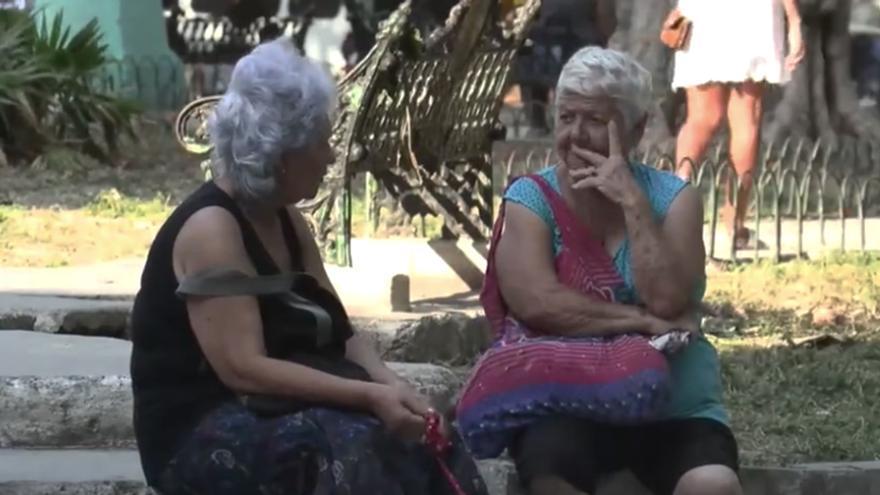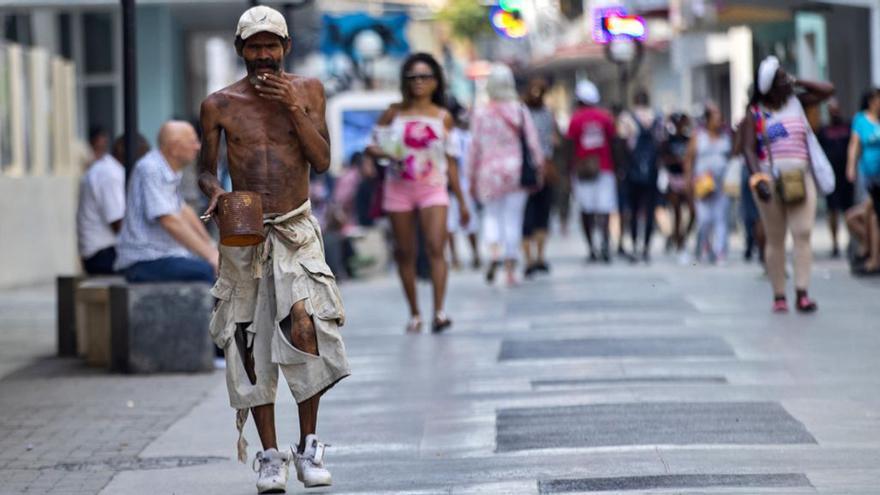
![]() 14ymedio, Elías Amor Bravo, Economist, 28 February 2023 — For all those who do not believe the story of the embargo/blockade and who are bored with all the pitiful complaints by the Cuban communist leaders, I recommend a visit to the 23rd edition of the Cigar Festival that is being held in Havana. It has nothing to do with an embargoed country. Quite the contrary. In addition, business is going smoothly.
14ymedio, Elías Amor Bravo, Economist, 28 February 2023 — For all those who do not believe the story of the embargo/blockade and who are bored with all the pitiful complaints by the Cuban communist leaders, I recommend a visit to the 23rd edition of the Cigar Festival that is being held in Havana. It has nothing to do with an embargoed country. Quite the contrary. In addition, business is going smoothly.
At a press conference, data were offered from the productive and commercial monopoly consortium of Cuban tobacco, the so-called Habanos SA, the golden retirement of Murillo,* which generated revenues in 2022 of 545 million dollars, 2% more than the previous year.
The multinational extension of the regime’s monopoly corporation is spectacular, since it has 4,769 specialized points of sale (157 Habano, 17 Cohiba Atmosphere, 587 Habanos Terrace, 2,744 Habanos Point and 1,264 Habanos Specialist), with a growth of 10% more than in 2021. Who would have thought? Despite the campaigns, Cuban tobacco consumption continues to increase. The festival has invited 140 specialized journalists from 20 countries around the world. Who said that the Castro government doesn’t know about marketing?
Someone could misinterpret this initial tone, but it’s not my intention. The point is that anywhere Cuba has a competitive product in world markets, which sells well, at good prices, which catches investors and tobacco smokers who come to enjoy cigarettes and order their purchases, the ’blockade’ simply does not exist. It’s not even mentioned. I looked in the communist state press that covers the Havana event to see if there was any statement against the embargo/blockade by the leaders who attended. Nothing. Don’t even bother looking. It’s something for Cuba’s high society, in the most stale style of millionaires and speculators. Let them enjoy themselves, Murillo included. continue reading
The state press pursued Díaz Canel and Murillo at the inauguration in the Cuban capital of the twenty-third cigar festival that, in order to spare no expense, will go on until next Saturday, March 4. A week to enjoy, at the expense of Habanos SA and the regime, the excellence of the best product of the Island since colonial times.
Along with white gold [sugar], Cuba was internationally recognized for the quality of its tobacco from the first tobacco planters of my beloved and never forgotten Santiago de las Vegas, a municipality that stood up to the cigar stores of the metropolis, to the painstaking growers of the Vuelta Bajo region in Pinar del Río. The cigar business has survived the revolution amazingly well, and there it continues, on its feet, demonstrating what Cuba can and could do in many other areas of commerce.
So in the most triumphant tone one can imagine and with the whining far away, Díaz Canel and Murillo dedicated themselves to public relations, and at the press conference at the Palacio de Convenciones, they recreated themselves with the economic results of the Habanos SA monopoly and presented the company’s management balance sheet for 2022 with great fanfare. Some discovered a Murillo who was much more relaxed than in the time of the Ordering Task.** It’s what the elite do far from the spotlight.
As it is not an embargoed, blockaded, or besieged nation, there at the press conference the world was informed from Cuba that Spain, France, Germany, China and Switzerland were the five main markets for the cigars last year. How good it would have been to include the United States. The leaders limited themselves to saying that only the order of the nations had changed with respect to 2021. Not a reference to the northern neighbor. Neither good nor bad.
Among the activities of the festival, in addition to the visit of businessmen and tycoons from half the world, who arrive in their private jets to the besieged Island and stay in the new hotels with astronomical prices, visits to Habana factories and tobacco plantations were scheduled in the western province of Pinar del Río as the state press says, and I admit, “internationally recognized as the land of the best tobacco in the world.”
Also in that framework of a besieged and embargoed nation, the state monopoly presented the novelties of the event, basically the launches of the Montecristo Open, Bolívar New Gold Medal and Master Line (banded) products. Innovation continues to be a fundamental element of the creativity of Cuban tobacco merchants, which makes you wonder what this sector could be like if there were no communist economic model governing the destinies of the economy and the nation.
Malmierca, minister of foreign trade and foreign investment, also walked through the festival and ended up destroying the argument of the embargo/blockade by reporting at the press conference that the fair has 2,000 attendees from 110 countries, 250 exhibitors from 10 other countries and 6,459 square feet of exhibition space. Figures like these would not be possible in an embargoed country.
Malmierca welcomed exhibitors from Italy, Hungary, Spain, Panama, Mexico, Costa Rica, Canada, Ecuador and China, including Cuban exhibitors. Of the 70 stands at the fair, 59 are Cuban, who, as Malmierca said, “show the varied offers of our country in the field of crafts, cultural and musical production, fashion, tourism, gastronomy and also everything related to cigars.”
Malmierca pointed out that “this trade fair will be an ideal framework for technical and commercial exchanges between companies, suppliers and the public that will be able to have access to the exhibition,” but those exchanges will be only for certain companies, basically the state ones, those that live within the regime.
I wish that the exchanges would serve Cuban private companies, guided by the motive of profit and profitability, but the regime’s internal blockade is another thing, the worst of all.
Translated by Regina Anavy
Translator’s notes:
*Marino Murillo is the Former Minister of Economy and Planning.
**The Ordering Task is a collection of measures that include eliminating the Cuban Convertible Peso (CUC), leaving the Cuban peso as the only national currency, raising prices, raising salaries (but not as much as prices), opening stores that take payment only in hard currency, which must be in the form of specially issued pre-paid debit cards, and a broad range of other measures targeted to different elements of the Cuban economy.
____________
COLLABORATE WITH OUR WORK: The 14ymedio team is committed to practicing serious journalism that reflects Cuba’s reality in all its depth. Thank you for joining us on this long journey. We invite you to continue supporting us by becoming a member of 14ymedio now. Together we can continue transforming journalism in Cuba.















